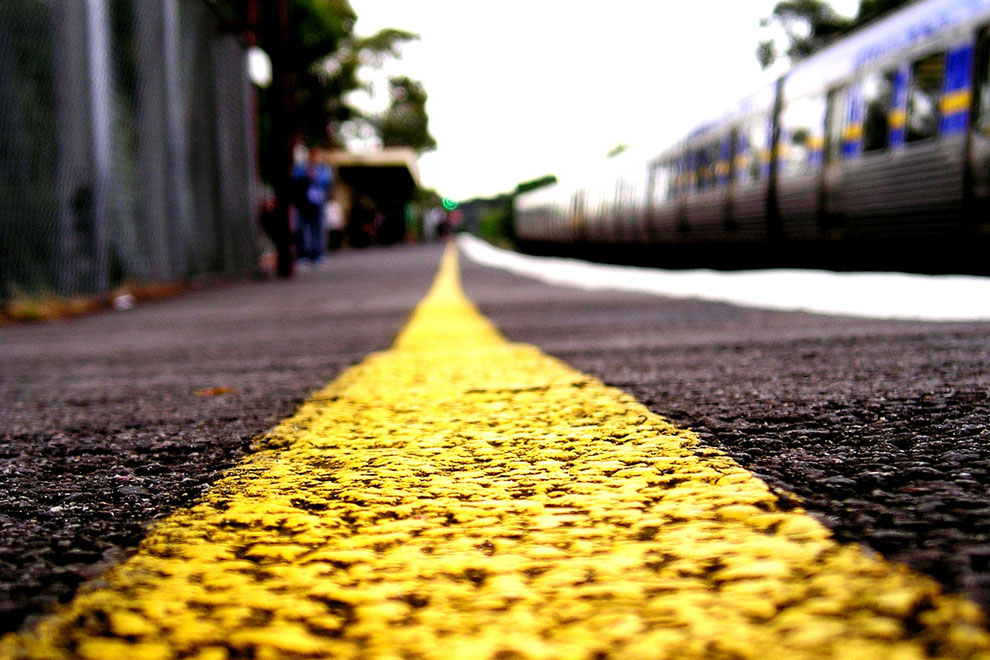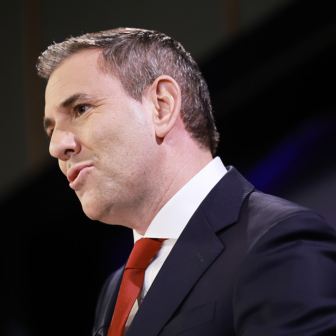Never have our governments been able to borrow money more cheaply. If we fear that our economy might underperform, or if we think we need to accelerate productivity growth by tackling the congestion choking our big cities, it has never made more sense for us to borrow and build.
So what are our state governments doing? New South Wales and Victoria, both AAA-rated and faced with mounting road and rail congestion, are giving priority to paying back debt.
Previously unreported data from the Australian Bureau of Statistics reveals that in the nine months to March, New South Wales, Victoria and Tasmania all repaid more money to the financial markets than they borrowed. At a time when it has never made more sense for them to take on debt, they chose to reduce it.
The Bureau reports that over those nine months, Victoria’s budget sector paid back $849 million more than it borrowed. Even the Baird government, not normally a slave to political correctness, paid back a net $447 million. And Tasmania, with better reason, repaid a net $117 million.
Okay, the June quarter may have swung that balance around, at least in New South Wales. The Bureau tells us the states and territories collectively did more than half their total borrowing for the year in the final quarter, taking on a net $2.2 billion of new debt.
But it is unlikely to have changed the balance in Victoria, where the problems of urban growth are accelerating most rapidly. In fifteen years, Melbourne’s population has grown by a third, adding more than a million people and congesting roads and public transport alike. Yet the Bureau’s figures show that over the same period, under Liberal and Labor governments, Victoria has invested less in building new infrastructure than any other state, as a share of national expenditure. Even Tasmania, with far smaller needs, invests far more of its resources in building new transport infrastructure.
A wide range of Bureau figures reveal a vast and growing gulf between what the states are doing, and what they are being urged to do by the International Monetary Fund, the Reserve Bank and, of course, Infrastructure Australia. Each of them is giving our governments the same message. Far from facing a debt crisis, Australia’s debt levels are very low by world standards. We have a lot of room to borrow. We have a lot of infrastructure needs, and they are holding back the economy. Interest rates are extraordinarily low: the states’ ten-year bonds are trading at 3 to 3.25 per cent. And the economy needs a stimulus to ensure that it can come through the mining bust – and the risk of global troubles, and a possible collapse in house prices – without a recession.
Other unreported Bureau figures show that every Australian state government reduced their investment in infrastructure in the year to June. Investment in public infrastructure as a share of output slumped to a ten-year low of 1.5 per cent of total spending in the economy, down from 2.3 per cent five years earlier, and 2.1 per cent when the Abbott government took office.
In current dollars, engineering work carried out for the public sector (whether by contractors or its own agencies) shrank by $7.35 billion, from $31.9 billion in 2012–13 to $24.6 billion in 2014–15. That’s a stunning 23 per cent fall, at a time when governments were being widely advised to increase that investment.
Investment in transport infrastructure by the public sector has slumped by 20 per cent in current dollars, from a peak of $17.8 billion in 2011–12 to $14.2 billion in 2014–15. The plunge has been particularly large in South Australia, where investment has more than halved, but investment in Queensland is down 39 per cent – and in Victoria by 28 per cent from an already low base.
Private investment in transport infrastructure has shrunk even more sharply. From a peak of $33.8 billion in 2012–13 it had shrivelled to just $24.6 billion two years later. It is unclear from the Bureau figures how much private investment is in mining-related roads, rail and ports, and how much in privatised infrastructure in the cities.
As a share of demand, investment in transport infrastructure has now slumped back to the levels of the Howard government: from 2.2 per cent two years ago to 1.5 per cent now. Investment in rail and ports has shrunk more rapidly than on roads and bridges, but it’s falling sharply in every category, and in every state except Tasmania.
The Bureau figures show that, as investors, the states fall into two broad categories. New South Wales, Queensland and (until recently) South Australia have put far more of their resources into building for the future than Victoria, Western Australia or (until recently) Tasmania.
Over the decade to June, 1.37 per cent of total spending in Queensland went into building new publicly owned transport infrastructure, although that was cut drastically by the Newman government. New South Wales averaged 1.25 per cent, and South Australia 1.13 per cent.
Tasmania (0.80 per cent) understandably has invested less, while in Western Australia (0.79 per cent) the government’s low investment during the mining boom could be defended as making room for that once-in-a-lifetime event.
Victoria (0.65 per cent) has consistently trailed the rest of the nation, and without any valid excuse (apart from the double standard of the Abbott government, which gave Victorians just $67 per head this year for new transport infrastructure, compared with $258 per head for people living in Coalition-led states).
The state’s leaders love to declare Melbourne the world’s most liveable city. They seem not to realise that Melbourne works because of the investments made by nineteenth-century governments, the Hamer government’s determination to build the underground rail loop, and governments of both sides investing to create a road network that worked until recently. Each side always has big plans, but the bottom line is what they are actually investing – and that it far too little to keep Melbourne liveable.
Ultimately, the problem is that we have created a fetish of opposing public debt while turning a blind eye to private debt. In 2014–15, the states – which are responsible for building our infrastructure, among many other tasks – borrowed just $4 billion net; aspiring landlords, meanwhile, borrowed nearly $80 billion net to buy rental properties. This is not going to make our cities liveable in future.
The ratings agencies confirm that there is some room for state governments to borrow more without busting their credit ratings, and considerable room for the Commonwealth to do so (which would work if, as the IMF suggested, it guarantee infrastructure-related borrowings by the states).
The simple reality is that if we choose to have rapid population growth, as Australia does, we have to build new infrastructure to accommodate it. And the cheapest way to finance that is for governments to borrow and build.
(Governments can also tax or charge and build, and there are good ways to do so: putting a congestion tax on vehicles using the inner city and crowded roads, converting all freeways to low-fee toll roads, or lifting our very low public transport fares. Past experience suggests voters will accept these if they can see where their money is being invested.)
Everything else, including the tax-increment financing plan floated last week by prime minister Malcolm Turnbull, is ultimately more expensive. Governments can borrow far more cheaply than companies can. In this area, private sector solutions are essentially second-best solutions. They’re better than doing nothing, but why not choose the first-best solution?
Successive interest rate cuts have done little to spur business investment; business will invest only when it sees rising demand for its products. This is the time for the government to create demand, by investing where it will enhance productivity, improve liveability and pay a way in the long term.
The Bureau’s construction data suggests a bleaker future. The new work commenced in 2014–15 shows a shift of spending away from rail and ports into roads and bridges, as the Abbott government dictated. And the pipeline of new projects keeps shrinking, from $34 billion in 2011–12 to just $25 billion in 2014–15. We are heading the wrong way. •




